The city of Sopron is located in the most western part of Hungary on an isthmus of land that pokes into Austria, near Lake Fertö (Lake Neusiedl).
Only 75 kilometers south of Vienna, it is directly west of Lake Fertő, the Fertőtáj UNESCO World Heritage site, and makes a great day trip or a stopover between Lake Balaton and Vienna. I love this city for lots of reasons.
It is a charming medieval village with quirky theatre groups, a firewatch tower, Hungarian dumplings, goulash, great Sopron wine served in unique Buschenschank or Poncichter wine taverns.
In this travel guide, you’ll find a brief history of Sopron, why and how to visit, what to see, what’s unique about this little city, and where to stay.
This article may contain compensated links. Please read the disclaimer for more info
Q. How is Sopron pronounced?
A. Sopron is pronounced, “Shop-ron.”
Hungarian pronunciation: [ˈʃopron]; German: Ödenburg, Slovene: Šopron. Hyphenation: Sop‧ron
Sopron – a magical Hungarian town
Scarbantia

Sopron is one of those magical hidden places in Europe. Its history includes its origins as part of the Roman Empire when it was known as the walled city of Scarbantia.
Scarbantia is still here – its Forum building and old Roman city walls have been excavated and are right next to the old town main square.
A Free Royal City

© copyright Civertan Grafikai Stúdió
During the 9th–11th centuries, the Hungarians came to Scarbantia, built a castle, and named the town Suprun after a castle steward named Suprun.
The children of Sopron’s nobility were held hostage by the Hungarians but the people seem to always have good political radar. When the Hungarian King, King Ladislaus IV arrived at the city with his armies, the city opened its gates for them. The King rewarded Sopron with the rank of a “free royal town.”
It was also during these early centuries of Sopron’s growth as a city that many Croatians settled in the area to tend the abandoned farms. The long history of Croatian settlement around Sopron is why the Croatian language is one of the recognized languages of the region including Hungarian and German.
The most loyal town in Hungary
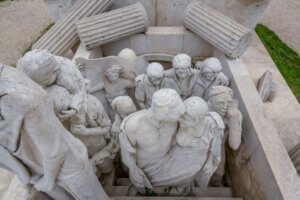
In the 16th century, the Ottomans occupied most of Hungary, but Ottoman Turks who ravaged Scarbantia in 1529 didn’t occupy the town and the region north of Lake Balaton remained a part of Hungary. As a result, the city’s importance grew as it became a refuge for Hungarians fleeing the Ottomans.
During the early part of the 20th century, this part of Hungary was settled by Germans as part of the Austro-Hungarian Empire and Sopron became known as Odenburg in Germany.
It was during the aftermath of WWI when the Austro-Hungarian Empire was broken up that the German-controlled areas of northwestern Hungary were given to Austria.
The local people didn’t welcome this and local unrest was rife. Because of it, a plebiscite was held in 1921 and the surrounding eight villages and Sopron voted to remain Hungarian. This date became an annual city holiday and reminds ins residents of Sopron’s status as the most loyal town in Hungary.
War and the 20th Century

The past century was a tumultuous one. Sopron suffered greatly in World War II from bombings, invasions, and its eventual capture by the Soviets in 1945. Under Soviet rule, the socialist government attempted to turn Sopron into an industrial city. Sopron did manage to maintain its medieval town center and many of its landmarks.
In 1989 Sopron was a catalyst for the mass flight of East German citizens escaping to the west during the Pan-European Picnic. This was a protest held on the borders of Hungary and Austria.
The lifting of the Iron Curtain created a well-known moment when hundreds of citizens could escape from the GDR. This successful crossing paved the way for the fall of the infamous Berlin Wall in November of 1989.
Sopron Today
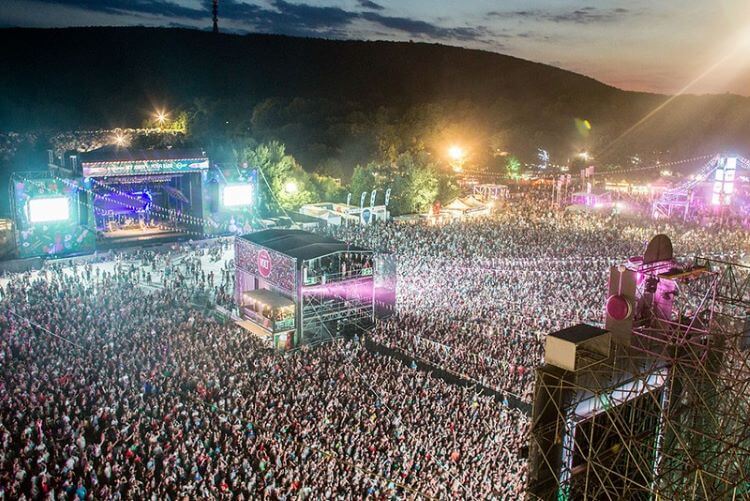
The modern-day city we see today is a part of the European Union. It has turned its economy around and now recognizes the heritage of Sopron’s German-speaking culture. It has become an officially bilingual city with both Hungarian and German used for traffic, street, and direction signage.
The Castle district was once enclosed by the city’s walls. It has been refurbished in a major urban architecture project, as has been Syzlenski square, making Sopron’s inner city a great place to walk around.
Győr is the county seat of Győr-Moson-Sopron county and the other main towns around Sopron are Mosonmagyaróvár and Kapuvár. Being so close to the Austrian border and with great transportation links, Sopron is popular with day-trippers and people traveling between Budapest or Lake Balaton and Vienna.
The population of Sopron is around 63,000 citizens with 10% of the population being Croatian which is why you will also see Croatian signs around the area (and why there are some great Croatian pubs here)!
How to get to Sopron
Sopron is located just beyond the Austrian frontier and Lake Fertő. Vienna is only 75 km away from Sopron and Hungary’s capital, Budapest, is only 200 kilometers to the east. Visitors also come from Slovakia as well as international destinations.
One of the reasons for Sopron’s popularity is that it has become known as the “dental capital of the world” and offers first-class dental treatment that is affordable.
Sopron is within easy reach of Vienna by car and you can take the A2 from Vienna to the A3 and then onto the Sopron exit directly to the city.
From Vienna, trains leave for Sopron every hour. The journey will take around 1 hour and 20 minutes and Sopron is the last stop on the line. This means that Sopron is an ideal day trip from Vienna.

Sopron can also be reached from the nearest international airports, which are Vienna and Bratislava. There are direct trains from both cities although you must take the train from the airport to the central train stations in both cities.
Bratislava is only a one-hour drive, or 2 hrs and 48 minutes by train, connecting through Győr.
Why visit Sopron?
I can think of so many reasons to visit and so many things to do, including exploring the old Castle district: its baroque Main Square with its cobbled streets, fascinating medieval houses, renaissance architecture, and old Roman archaeological site in the middle of town.
Then there’s the lovely Croatian pubs and Hungarian cafes and restaurants, the best local wines from the vineyards in the Sopron hills, and even inexpensive dental work – what else do you need?
Did I mention the centuries-old monasteries converted into ridiculously cheap accommodations around Sopron?
Sopron Hungary Map
What to see and how long to stay in Sopron
Baroque architecture, cobblestone squares, museums, churches, wine taverns, and a fire watch tower can all be seen in one day. An overnight stay in Sopron will give you two full days of exploring the city.
A third day will allow you to get out into the Sopron hills, the wine district, and Lake Fertö or to see one of Sopro’s many festivals such as the Fairy Festival.
Below are all the main sights in the old city (the Castle district).
Old Town Main Square

On the Northern side of Old Town, Sopron is the main square (Fő tér), which is surrounded by beautiful and elegant architecture.
The center of the square’s focus is the Holy Trinity Column which is a striking baroque monument erected to commemorate the end of the Black Death. It was erected in 1701 and by the end of the 18th century, it had become an important symbol to the people of Sopron. Decorated with figures of patrons and saints the monument was a tribute of gratitude to God for ending the plague.
The square itself encompasses the City Hall (Eggenberg House), Storno-ház (opposite City Hall), and Fabricius-ház (see below). At Christmas time, it is also the site of the Christmas market.
The Storno- ház (Storno House) is one of cities grandest baroque buildings that date back to the 15th century. It is now a museum that holds the treasures of Ferenc Storno and his family.
It’s worth seeing inside Storno House not just because of its grand baroque architecture, but also because its rooms are decorated with stunning antiques including furniture, paintings, arms, weapons, and china and glass treasures collected by the family over the centuries.
Storno House, Sopron, 8, Main Square Tel.: 99-311-327
During the works to the Museum Quarter, the Storno House exhibitions are closed.
January-December: Tuesday-Sunday: 10.00-18.00
On Mondays, the exhibition is closed.
| EXHIBITION | ADULT ADMISSION | SENIORS AND STUDENTS ADMISSION | ||
| Storno Collection | 1000,-Ft | 500,-Ft |
Fazbricius-ház (Fabricius house)

Credit: Texaner, CC BY-SA 3.0
Fabricius-ház is, strangely, Hungary’s first national monument. It was given the title by King Louis II. Its Gothic Hall is especially worth seeing.
Fabricius-ház means “Two Moors house” and contains two very different types of museums. The first displays items used in everyday Storno life from centuries past.
But this 14th-century Baroque house with 17th and18th-century interiors also contains excavated treasures from the Roman period. This is quite a fitting modern-day use of the building, as a Roman bath has been discovered in the basement and it is now a dedicated space for a Roman lapidary museum.
Fabricius House, Sopron, 6, Main Square Tel.: 99-311-327
During the work to the Museum Quarter, the Fabricius House exhibitions are closed.
January-December: Tuesday-Sunday: 10.00-18.00.
On Mondays, the exhibition is closed.
| EXHIBITION | ADULT ADMISSION | SENIORS AND STUDENTS ADMISSION | ||
| Archaeological Exhibition – Roman Lapidary | 800,-Ft | 400,-Ft | ||
| Town Residences | 800,-Ft | 400,-Ft |
The Goat Church

The Church of the Assumption in the main square is nicknamed the Goat Church. Why “Goat Church”?Local stories say a goat herder uncovered a treasure on the site and you will see on the Holy Trinity Column a goat being hugged by an angel.
A gothic church, the interior is mainly Baroque with a stunning red marble pulpit. The church is decorated with fading frescos and animal stone carvings representing human’s deadly sins. it is the main Roman Catholic church in the city and Coronations were once held here, as well as sessions of Parliament.
Tűztorony (Firewatch Tower)

The iconic landmark and the de facto symbol of the city is the Tűztorony or Fire Tower which stands 58 meters high. Watchmen used to stand on the balcony to warn the people of encroaching fires and potential enemies.
The watchmen were also known for their musical prowess and were often a feature of weddings and celebrations taking place in the center of town. The tower itself stands on Roman foundations and consists of several architectural styles including a baroque crest placed on top in 1676.
1676 was the year in which much of the town was destroyed by fire. The city was rebuilt over the next few decades with Hungarian baroque buildings being erected in place of the destroyed medieval ones.
Sopron, Main Square Tel.: 99-311-327
Monday-Sunday 10:00-18:00
July-August Sunday- Thursday 10.00-18.00, Friday and Saturday 10.00-20.00
| EXHIBITION | ADULT ADMISSION | SENIORS AND STUDENTS ADMISSION | ||
| Fire Tower | 1400,-Ft | 700,-Ft |
Scarbantia Roman Forum

Scarbantia’s Roman Forum is next to the main square and has been excavated deep below the lines of multi-storied houses all around it. The partially excavated Roman ruins in the very center of the city are part of what makes Sopron unique. They were only discovered in the 1980s although a few statues were found 300 years ago. Excavation of the Capitolium began in 1956.
At one time Scarbantia guarded the Roman road north to Italy and was designated by the Romans as a municipium. It was a city with a Capitolium, amphitheater, waterworks, and the Forum that you can see today.
It’s also possible to see some of the remains of the oval-shaped wall that was 3 meters thick and 8 meters high and had mighty gates and fortified towers between its lengths.
Liszt Ferenc Conference and Cultural Centre
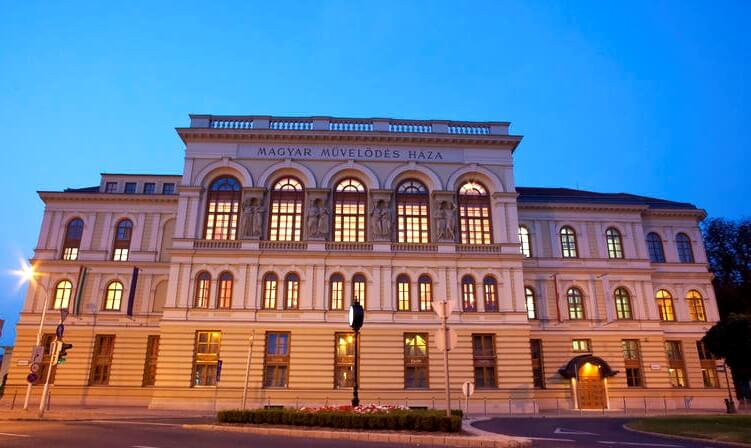
Second, only to the Firewatch Tower in terms of importance to the city, the Ferenc Liszt Conference and Cultural Center was once the city’s Community House, dating from 1873. Unfortunately, one of the Rondelles of the old Castle wall was pulled down to make way for the building. It has been a casino and the site of many important balls and concerts.
It is one of the most photographed buildings in Sopron and has been renovated to now include an auditorium for 1200 people.
Plays and concerts are held at the Center as are lectures. There is a ticket office at the Center where you can buy tickets to see performances in two of Sopron’s theater venues including the Petőfi Theater but also other venues around the city such as the Cave Theater (and Quarry). There is a little public cafe on site where the theater’s performers hang out.
Address: 9400 Sopron, Liszt F. u. 1.
Bakery House Museum (Pékmúzeum)

Credit: Peter Adam
From 1686 (the year that Sopron was destroyed by fire) until 1972, Bakery House was a working bakery. When the last baker died, the city purchased Bakery House ( a part of Negyedi bakehouse). It purchased all the contents of the Bakery and it is now a museum that shows you what a bakery looked like in Middle Europe a few hundred years ago.
The bakery is in the west wing of the building. You will see a coat of arms above the entrance that depicts two lions breaking a piece of pretzel.
It is known as the Pékmúzeum and you can probably guess that Pék is the Hungarian word for bread! It is located within the old farmer’s district located outside the city’s walls as was common in this part of Europe from the medieval period.
It’s a fascinating area to stroll around. The main streets in the farmers and craftsmen district are Balfi, Bécsi, Fövényverem and Halász streets. It’s an easy stop on a one or two-day itinerary to central Sopron and is near the equally fascinating Poncichter district (see below).
Sopron, 5, Bécsi street Tel.:99-311-327
Open May-September: Tuesday-Sunday: 14.00-18.00, closed October to April. It can be visited by groups by booking in advance at titkarsag@sopronimuzeum.hu
| EXHIBITION | ADULT ADMISSION FEE | SENIORS AND STUDENTS ADMISSIONS FEES | ||
| Bakery House | 700,-Ft | 350,-Ft |
Wine and Food
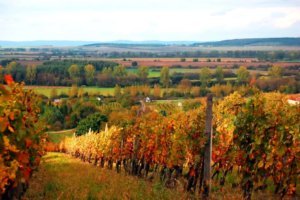
Red wines and Buschenschank taverns
During the Roman occupation farmers in Sopron began cultivating wine grapes and producing both red and white wine.
According to stories from the winemakers, Napoleon’s soldiers who invaded Sorpon paid for their wine with a blue frank note, which the name of the most famous Hungarian wine Kékfrankos came from.
The red wines made from the Kékfrankos can be found internationally, but for a true Sopron experience, try a few different varieties in the unique Buschenschank taverns. They only exist in this part of Hungary.
They date back to the 17th century when winemakers would open their kitchens and courtyards to the public as licensed premises. Sopron winemakers didn’t store their wine out at the vineyards, they stored it in the city under their own homes!
The Buschenschank is similar to the Heuriger in eastern Austria. I find the newer Sopron region wines often have quite a rustic flavor, perfectly suited to the humble origins of the Buschenschank wine taverns.
Although famous for its red wine, Sopron does grow white grapes and in the communist era, both white and red wine were mass-produced. The area is becoming known for quality wines that match Austrian varieties but are much less expensive.
Poncichter District
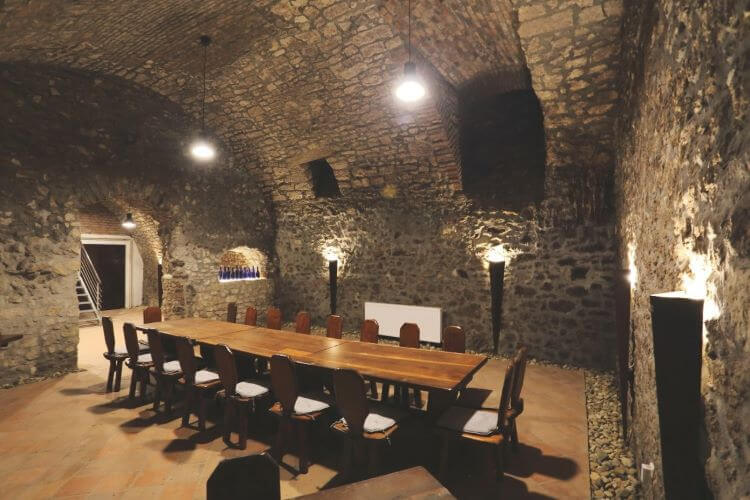
The farmers who grow the grapes were masters at using all the available areas for growing crops and they began to grow beans among the vines. They were known as Poncichter (bean growers) and you can find Buschenschank or Poncichter wine taverns in the “Poncichter District” in Sopron. This is an area encompassing Balfi, Gazda, Szentlélek, and Szent Mihály Streets on the edge of the city center.
As in Austria, you will find an object like a wreath or a bottle or a ribbon outside the taverns or hung over the doorways to show that they are open.
Local cuisine

The planting of beans between the vines by the Poncichter has led to Sopron’s traditional cuisine incorporating many bean dishes from salads to main courses and even a sweet bean strudel. This must surely be one of the strangest effects of wine production upon cuisine!
Spiced cabbage is one of the Hungarian dishes that is commonly served in the Sopron area and usually meals are meat-heavy with substantial goulashes and stews. Both can be more like soups, and dumplings are often sliced and more bread than dumpling-like.
The local restaurants also serve Croatian favorites many of which include cabbage but also veal dishes and pasta surprisingly. Together these different traditions and histories combine to make this little corner of far-western Hungary a unique experience.
Street festivals, markets, the Christmas market, and street stalls sell popular Hungarian street foods such as Lángos. These deep-fried flatbreads are common in Sopron wherever there is street food available!
Where to Stay
Our Top 4 Picks
🛎️ Vadászkürt Panzió – Vadászkürt Panzió is an affordable combined guesthouse and restaurant. The restaurant and cellar are fabulous.
🛎️ Pannonia Hotel – the elegant 4-star Pannonia Hotel is situated in the heart of Sopron. The hotel is the oldest in Sopron and was built in 1893.
🛎️ Sopron Monastery Hotel -One of my favorite hotels in the whole world! Unforgettable atmosphere, surrounded by gardens and forests, and a terribly romantic laneway and entrance.
🛎️ Hotel Palatinus– a convenient 4-star hotel in the old town (you can see the Fire Tower at the end of the street!)
Links and Further Information
- There are so many things to do in Hungary in central Europe. See all of the best things to do in Hungary, from Get Your Guide here
- Hungarian castles are beautiful, spooky, and many have horrible histories! Read about the best 28 castles in Hungary to see which you’d like to visit on your trip to Hungary.




